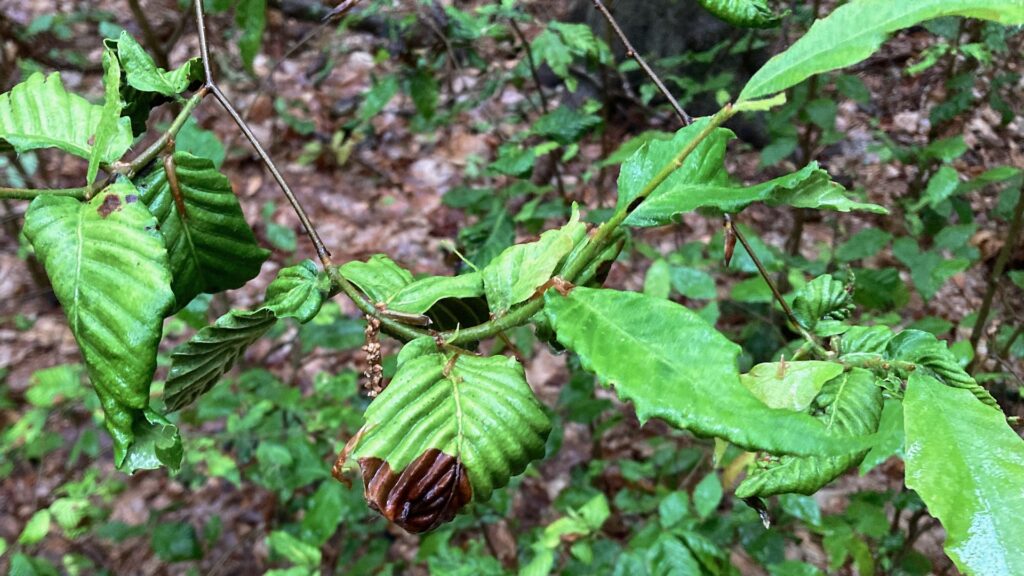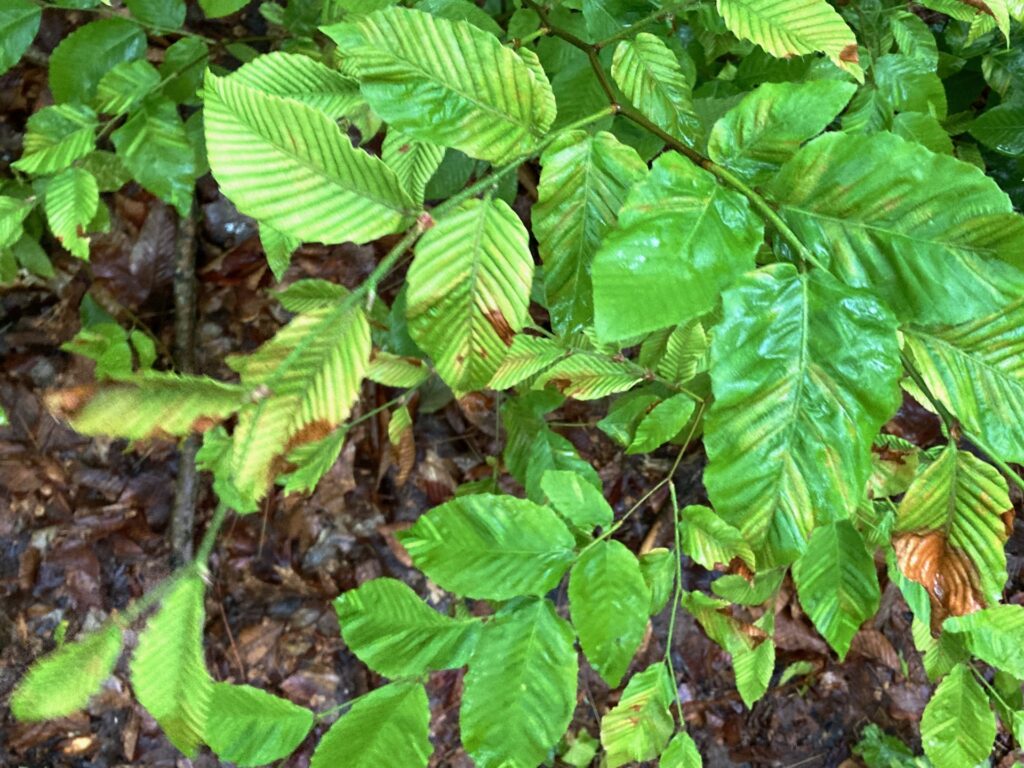Beech leaf disease (BLD) has arrived in Cohasset. I’m seeing leaves on American Beeches withering and dropping off both in Wheelwright Park and in the Whitney Thayer Woods. In some places, stands of beeches have lost so many leaves that it no longer feels like you’re walking in the forest.

A scientific article from two and a half years ago — Sharon E. Reed, et al., “The distribution of beech leaf disease…,” Forest Ecology and Management, vol. 503, January, 2022 — found that BLD is a worse threat to American Beech stands than two previous invasive pathologies, beech scale (Cryptococcus fagisuga), and beech bark disease (C. fagisuga and Neonectria spp. complex).

An invasive nematode from east Asia, Litylenchus crenatae, is always present when BLD is present. But a scientific article from Sept., 2021 — Carrie J. Ewing et al., The Foliar Microbiome Suggests that Fungal and Bacterial Agents May be Involved in the Beech Leaf Disease Pathosystem, Phytobiomes Journal, pub. online 29 Sep 2021 — also found that organisms from four bacterial genera — Wolbachia, Erwinia, Paenibacillus, and Pseudomonas — and one fungal genus, Paraphaeosphaeria — are always present with the nematode when BLD is present.

From what I can gather, our understanding of BLD is still incomplete. However, a few things are quite clear. The University of Rhode Island suggests a couple of strategies to try to save trees from BLD: heavy applications of phosphite fetilizer twice a year, and/or application of pesticide to kill the nematodes. If trees with BLD are left untreated, they will die within 6 to 10 years. Since we cannot treat most trees in our forests, we can expect most infected American Beeches to die within a decade.
Yet another reason for eco-grief.
And this is another reminder that as dire as the situation might be with climate change, invasive species are also devastating our New England forest ecosystems. A hundred years ago, we lost our American Chestnuts to invasive Chestnut Blight. Fifty years ago, we lost most of our American Elms to invasive Dutch Elm Disease. We’re in the process of losing all our Eastern Hemlocks to an invasive insect, the Woolly Adelgid, and all our ash trees to another invasive insect, the Emerald Ash Borer. Now we’re losing all our American Beech trees to yet another invasive organism.
Yes we need to stop climate change, but that’s only a part of the threat to Earth’s life-supporting systems. There’s a lot of work for us to do….
